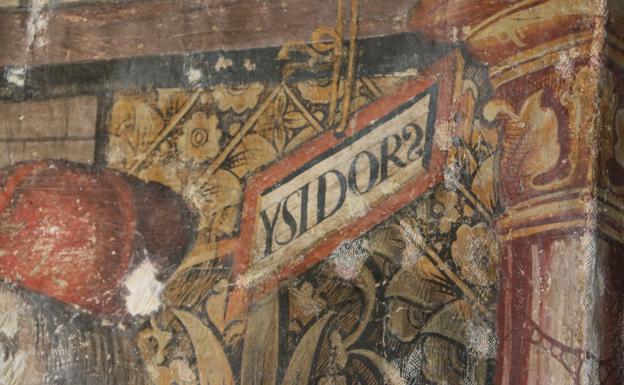THE INTERVENTION IN DOÑA SANCHA'S CHAMBER CONCLUDES
After several months of restoration work, the Chamber of Doña Sancha of the Royal Collegiate Church of San Isidoro de León has finally opened to the public.

Photographs from www.leonoticias.com/
The intervention, financed and directed by the Junta de Castilla y León, has been carried out by the team of restorers of Arte Granda. The restorers have worked for months on this project, aware that only a good restoration work, intense, meticulous and respectful of the original work could return the chamber to its former splendor. The chamber, which has gone unnoticed for centuries, is, according to the Councilor for Culture and Tourism, "the most important of its kind in the world".one of the areas of greatest interest, both architecturally and symbolicallyof San Isidoro".
The restoration work carried out included three works: the recovery "in situ" of the preserved mural paintings, the restoration and relocation of the fragments removed and the relocation of the stone doorway, removed from the chamber in 1964.
[wpvideo DybMfD1p].
The project aimed to return the chamber to the state it was in in the 16th century, repairing, as far as possible, the interventions carried out in the mid-20th century.
RECOVERY OF THE MURAL PAINTINGS
The original paintings, depicting the hagiographic cycle of Saint Isidorewere fragmented. On the one hand, they were preserved two paintings on the eastern and western walls of the chamber and, on the other 25 fragments of the fragments that had been stored in the room of the Magdalena chapel were removedThe site where they were deposited after the studies carried out in 2011.
The intervention on these paintings consisted of the following adhesion on the reverse side to a manipulable textile backing and removal of starting fabrics that concealed the front of the painting. After examining and locating the fragments, they have been bonded to aluminum honeycomb panelspreviously adapted to the volumes of the wall surface and prepared with the appropriate texture. Then we proceeded to the fastening of the panels on the walls and to the laying of mortars both in the vault and in the large losses with adequate intonation and granulometry.

Photographs from www.leonoticias.com/
Finally, in order to finish the recovery of the paintings, we carried out the cleaning, consolidation and chromatic reintegration of lacunae small and medium-sized companies by means of tratteggio" technique, and in the larger ones with neutral reintegration mortar.
In the treatment of the paintings of the eastern wall, a The start-up of the project made it possible to discover, document and carry out a conservation treatment on the underlying grisaille. prior to restoration work on the visible paintings. A mounting system using panels and pulleys makes it possible to access the underlying painting.
RELOCATION OF THE STANDING COVER
To complete the renaissance stage of the room and, given that the imprint of the paintings, marked the location of the stone cover, the disassembly for repositioning in its original locationas access to the library from the camera.
